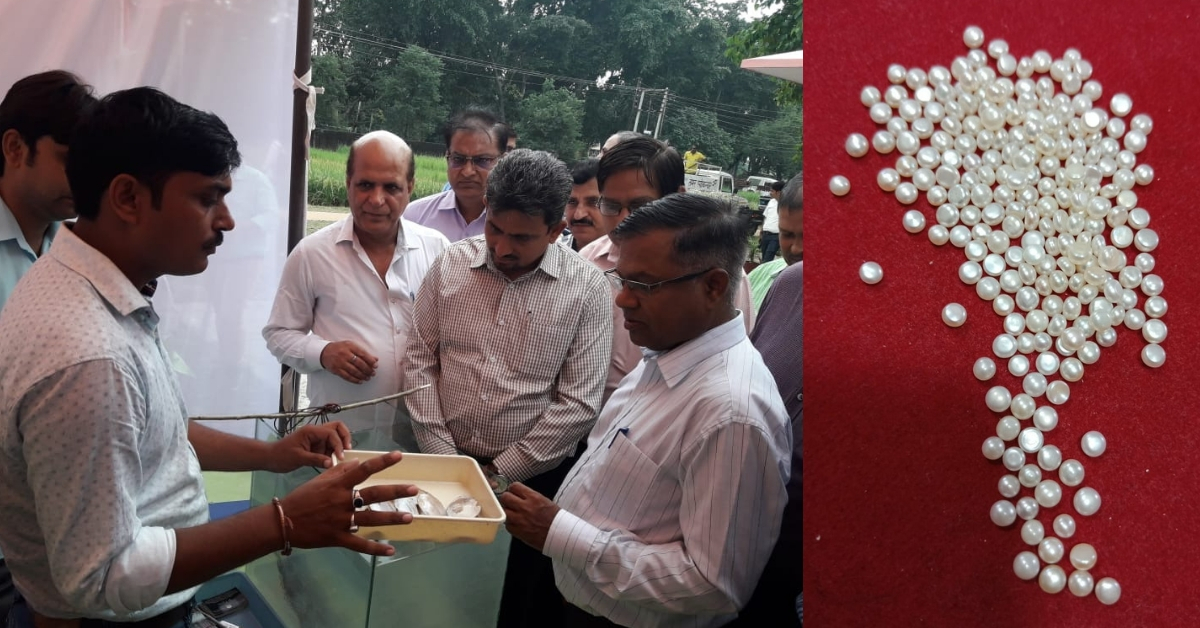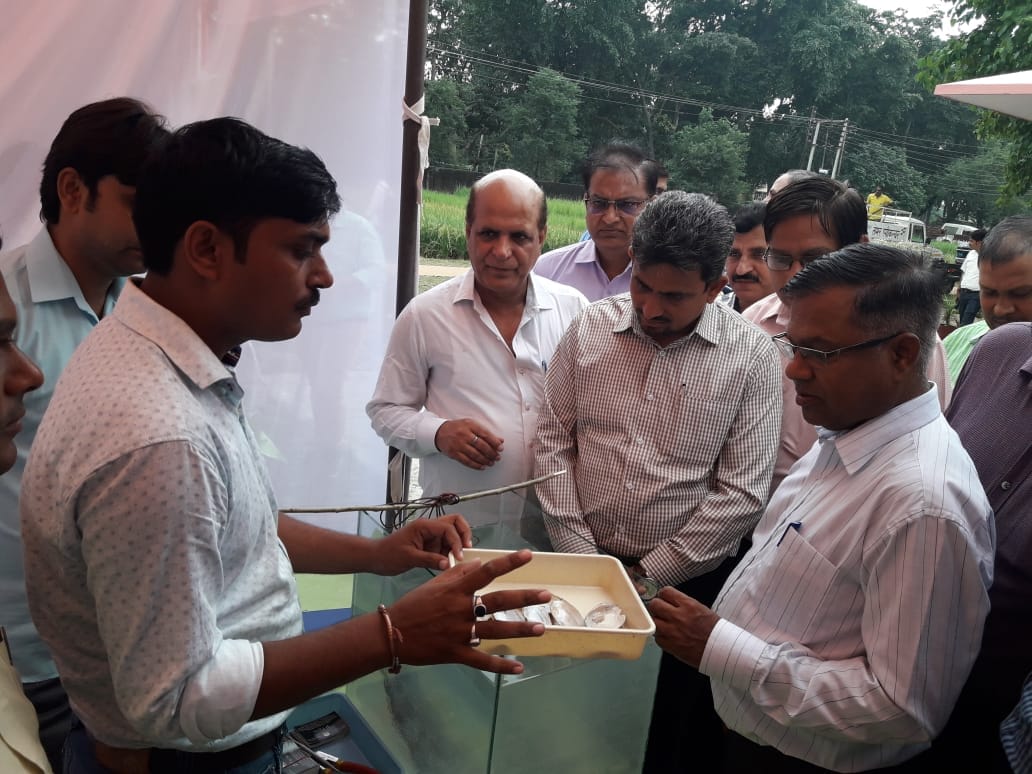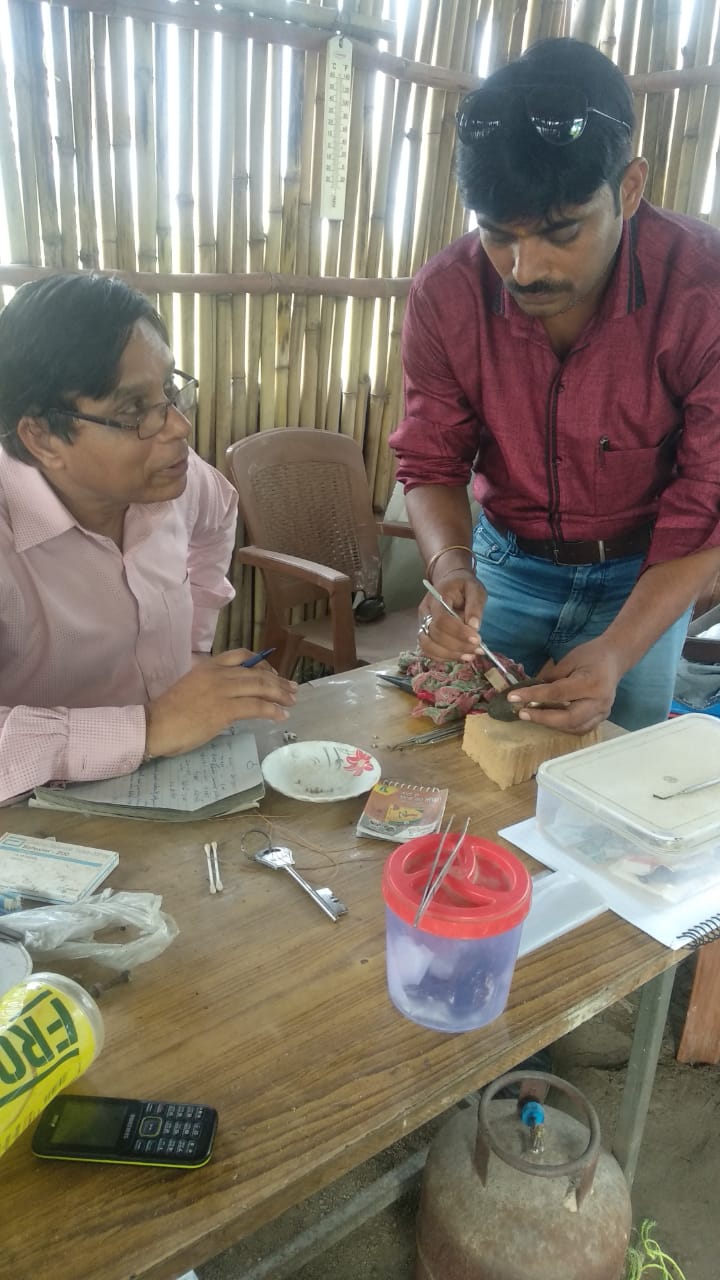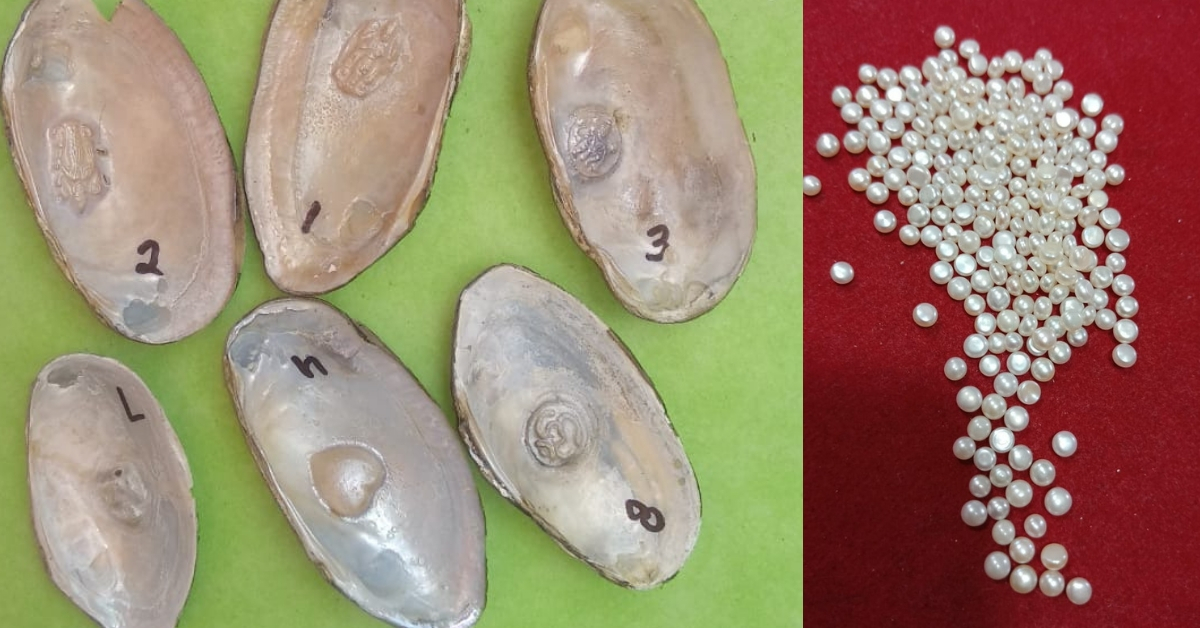Inspired By YouTube, UP Farmer Learns Pearl Farming, Digs Own Pond & Now Earns Lakhs!
Two years ago, this sugarcane farmer made a decision that helped turn all his losses into an additional source of income! It was to do pearl farming. Today, his additional annual income is to the tune of Rs 8 lakhs!

About 430 kms away from the capital of Uttar Pradesh is the village of Dhampur in Bijnor district. 34-year-old Bijender Chauhan, a farmer, calls it home.
Agriculture ran in his family. Even though his father chose to retire as a government employee and headed a cooperative, Bijender knew that he wanted to become a farmer.
Little did he know that he would become one of the many sugarcane farmers, who despite owning 20 bighas of land, would struggle with returns.

(One bigha is approximately 0.25 hectares.)
“If it rained once, our fields would get waterlogged. And no matter what you did, the level wouldn’t go down for five months! The only crop we could grow is sugarcane, as it is water-intensive. I also grow mustard and pulses like moong (green gram), but the income is just as uncertain as the climate,” says Bijender, in an interview with The Better India.
But two years ago, this sugarcane farmer made a decision that helped turn all his losses into an additional source of income!
It was to do pearl farming.
Today, his additional annual income is to the tune of Rs 8 lakhs!
The Better India documents his journey in an exclusive interview.
Pearl farming is not the man’s first exposure to aquaculture. When he realised that agriculture wasn’t going to give him the expected returns, a young Bijender ventured into aquaculture as an additional source of income where he bred freshwater fish, created aquariums, and sold them.
“In my 13 years of experience in aquaculture, I knew I wanted to set up a business of my own. Not just restricted to fish farming, but something different. I started looking up on Facebook and YouTube for alternatives when I stumbled upon pearl farming. In school, we had learned about how natural pearls were formed. And since pearl culture wasn’t explored in my home district, I thought it would be a great idea for a business,” says Bijender.
But when the farmer turned to his local Krishi Vigyan Kendra (KVK) for guidance, they told him that nothing like pearl culture existed!
Bijender did not give up.
Being a tech-savvy farmer, he turned to social media to know more about pearl farming.

It was at this time that he came across a video by a Nagpur-based National Pearl Farming Training Centre. He wasted no time and got in touch with Bhuwanbhai Patel, who runs the institute.
Impressed by his willingness to learn the art of making pearls, Bhuwanbhai invited Bijender to Nagpur for a two-day training.
Bijender returned to his village and dug a pond in a dedicated three-bigha plot.
“Pearl farming requires minimum labour and is extremely profitable as an additional source of livelihood since it can be practised even in a 10×10 feet pond. Once you’ve dug a pond, you can either use shells (oysters) from a local water body or buy them from a supplier at a meagre price of Rs 5 per piece.”
All you need to spend on is the feed for the shells and nylon ropes that you use to hang them for 14-16 months, he informs.
He adds, “Once the shells are bought, it is best to let them adapt to your pond for the first 8-10 days. Immediately working on them can lead to increased mortality. Also, it is best to use shells within a 60-km radius of your locality, since it is easier for them to adapt to the water around their source area.”
Once the shells are fed, they are hung on to a nylon net for a period between nine to 24 months; sometimes even 36.
Read More: 3-Feet-Long Carrots to Cauliflowers that Weigh 25 kg! Meet 4 Innovative Farmers
While designer pearls with custom designs require grafting on the outer layer of the mollusc, round pearls require grafting on their inner layer.

While one shell can produce two designer pearls in nine to 12 months, the quintessential gol moti (round pearl) requires between 18-24 months to form. Interestingly, one oyster will produce only one pearl.
“These pearls, when sold in the wholesale market, earn us anywhere between Rs 200 to Rs 250 per piece. So even if you have about 1,000 shells and 500 of them die, you get 500 pearls from the rest, which will still earn you one lakh rupees after the sale,” says Bijender.
When Bijender started, he too suffered from the high mortality of shells, almost up to 50 per cent. Despite the loss of shells, not only was he able to recover his original investment, but he also earned a profit of Rs 1.5 lakh in the first year.
Today, the man has come a long way.
He has four huge ponds, almost as big as 165×65 feet and 70×25 feet where he has over 15,000 shells.
Apart from working on his agricultural farm, the man dedicates two hours a day for pearl farming and grafts shells in batches. In addition to the current number, the man also has 5,000 more shells in storage for the next season.
He adds how the initial cost of setting up the pond, buying shells and the cost of the manual labour was way cheaper than the profits gained by pearl farming. One person can easily take care of a three-bigha site alone, he notes.
“It is all a trial-and-error method. Training can teach you the basics of pearl culture, but you will only learn what works best when you practice it. From adjusting pH levels in the water, checking the oysters for any diseases or mortality to giving them the right amount of feed, you start learning when you do it on your own. While farmers like us sell the pearls to wholesale dealers for Rs 200-250, the final value of the each of these pearls after finishing, goes up to Rs 500-600, even Rs 1,000 based on their weight!” he beams.
The man proudly wears the badge of being the first pearl farmer in his family. Moreover, he also claims to be the first in his district to do so!
With his pearl farming gaining momentum, he projects an additional income of Rs 10 lakh for this year!
Bijender is now working towards helping small and marginal farmers adopt pearl farming through demonstrations and workshops.
In his final message, he encourages farmers, saying, “Even if you have a small land, take up pearl farming as an additional income. You may be sceptical at first. But how would you know unless you tried? It is time we become self-sufficient.”
If this story inspired you, get in touch with Bijender Chauhan on 097199 94499.
(Edited by Shruti Singhal)
Like this story? Or have something to share?
Write to us: [email protected]
Connect with us on Facebook and Twitter.
This story made me
- 97
- 121
- 89
- 167
Tell Us More
We bring stories straight from the heart of India, to inspire millions and create a wave of impact. Our positive movement is growing bigger everyday, and we would love for you to join it.
Please contribute whatever you can, every little penny helps our team in bringing you more stories that support dreams and spread hope.



















